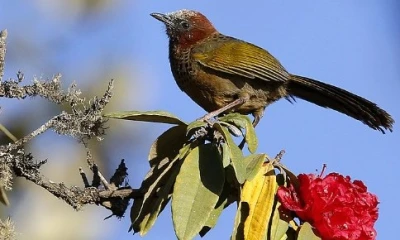For the first time in Nagaland’s Tuensang, researchers have employed molecular techniques to unravel the district’s rich biodiversity. Using DNA barcoding, scientists from St Joseph University, Dimapur, identified a total of 62 species, spanning insects, spiders, lizards, birds, and mammals.
Tuensang, situated in Nagaland’s eastern region, serves as a biodiversity hotspot within the Indo-Burma (Myanmar) region. Despite its relatively small size, Nagaland boasts diverse climatic conditions, ranging from tropical to temperate, fostering a rich array of flora and fauna.
The study, conducted by Chaueichongla Phom and Jeyaparvarthi Somasundaram of St Joseph University’s Zoology Department, aimed to establish a molecular marker-based reference library for native faunal species in Tuensang. Their findings, published in the Biosciences Biotechnology Research Asia journal, mark a significant milestone in understanding the region’s biodiversity.
Molecular characterisation, employing both mitochondrial and nuclear DNA, offers a precise means of species identification. DNA barcoding, in particular, has emerged as a robust strategy for identifying and discovering animal species. In Tuensang, this approach revealed a diverse range of fauna, including 20 bird species, 11 mammals, 5 spiders, 2 lizards, and 24 insects.
Among the species identified, vulnerable species such as Tragopan blythii, Sitta formosa, and Rusa unicolor were noted, highlighting the urgent need for conservation efforts. Overexploitation, traditional Jhum shifting cultivation, and hunting activities threaten the survival of these species.
The study shows the importance of molecular markers in assessing genetic variability and informing conservation strategies. However, the authors asserted that DNA barcoding should complement, rather than replace, traditional taxonomy methods.
The insights gained from this study will inform conservation efforts and policy-making initiatives aimed at safeguarding Tuensang’s unique biodiversity. By enhancing our understanding of the region’s fauna, researchers hope to pave the way for effective protective measures and sustainable management practices.

















